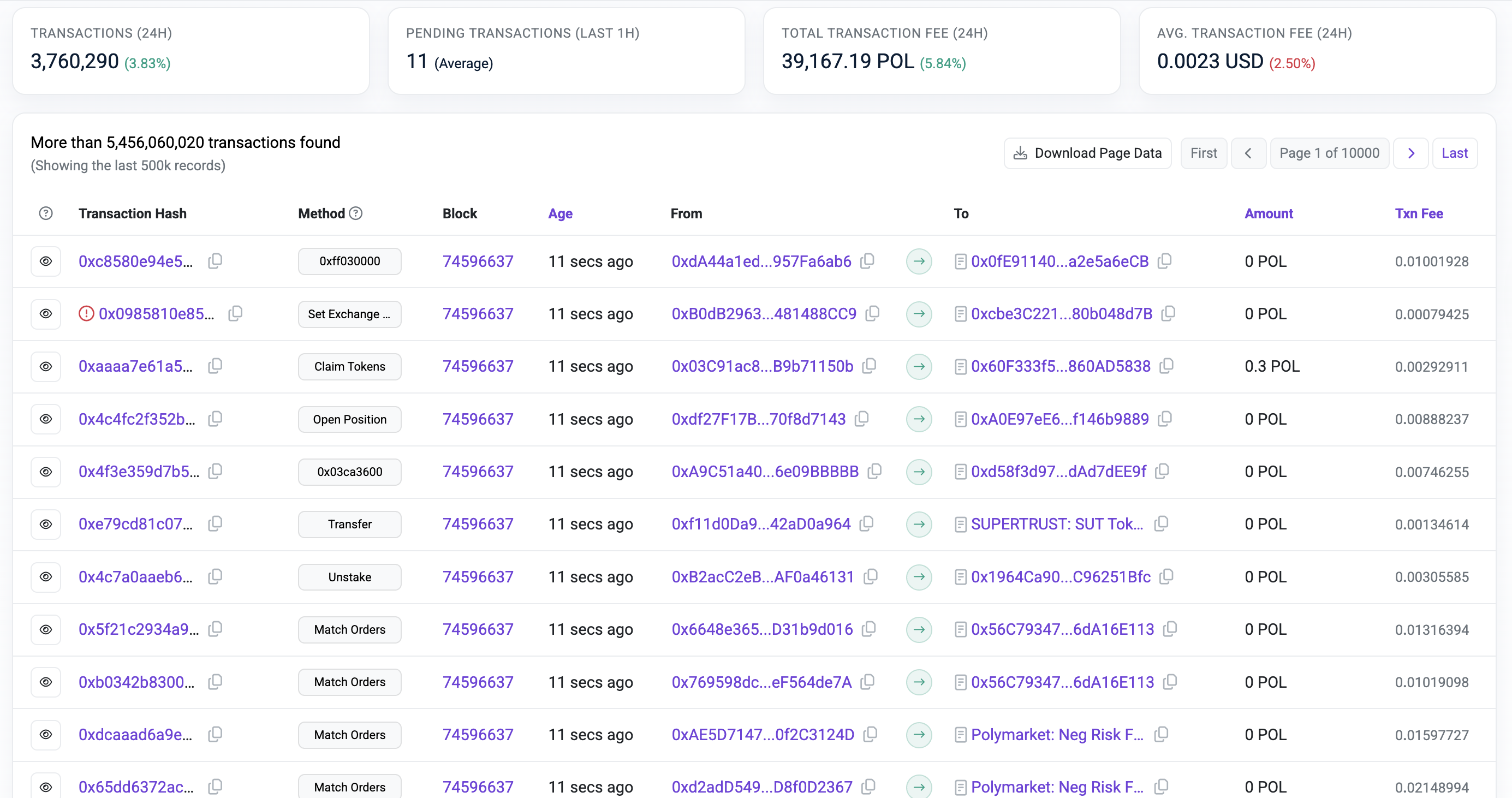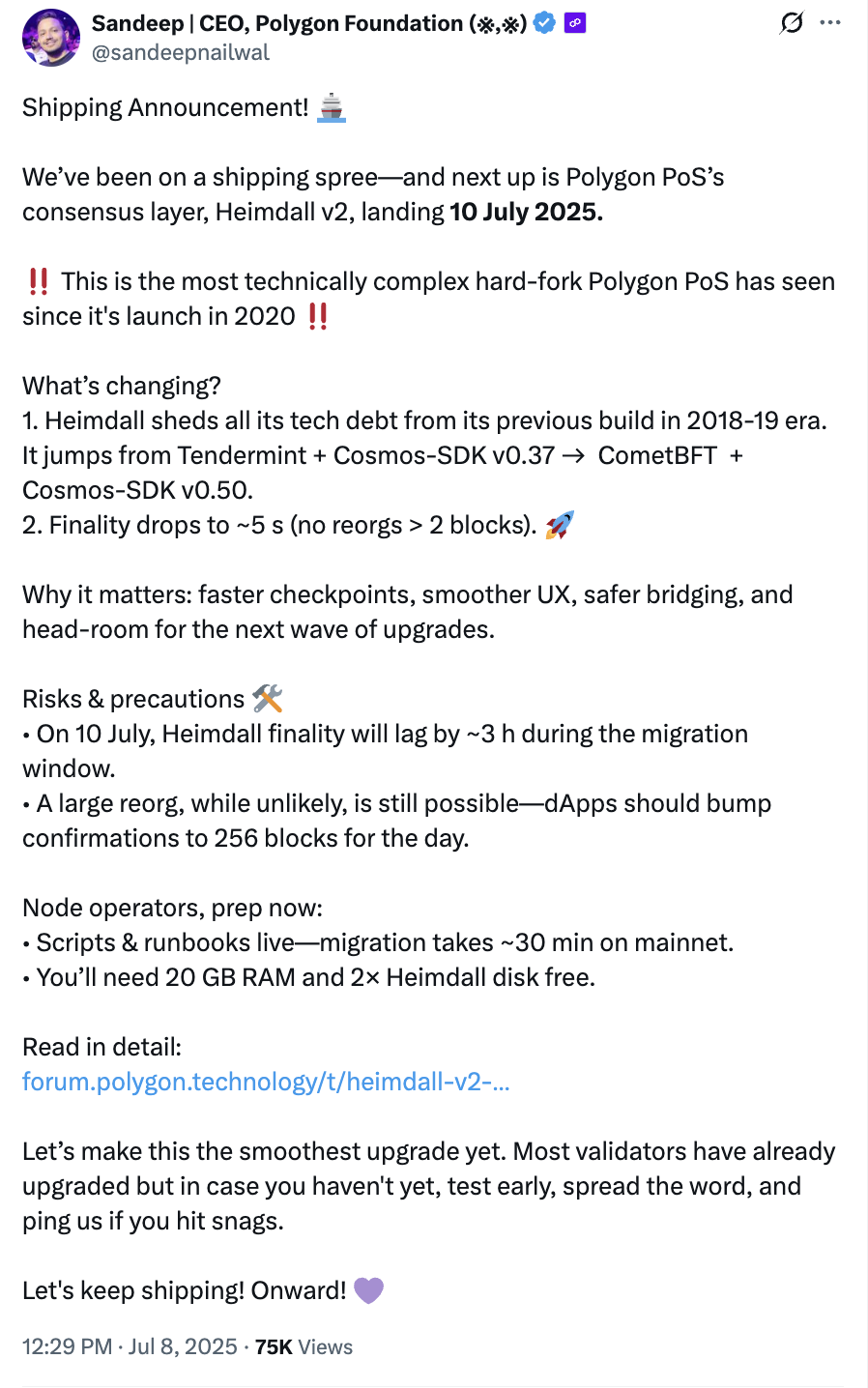Polygon’s Heimdall V2 mainnet faced a one-hour downtime caused by a consensus bug, but the Bor layer, responsible for block production and transaction processing, remained fully operational throughout the incident.
-
Heimdall V2 downtime lasted one hour due to an unidentified validator’s exit from the network.
-
The Bor layer maintained uninterrupted block production and transaction execution during the Heimdall outage.
-
Polygon is collaborating with RPC providers to resolve sync inconsistencies following Heimdall’s recovery.
Polygon Heimdall V2 downtime resolved without affecting Bor layer; network stability restored. Stay updated with the latest crypto news on en.coinotag.com.
What Caused the Polygon Heimdall V2 Mainnet Downtime?
The Polygon Heimdall V2 mainnet experienced a downtime of approximately one hour on July 9, 2025, caused by a suspected consensus bug triggered by an unidentified validator’s exit from the network. Despite this, the Bor layer, which manages transaction execution and block production, remained fully functional throughout the incident.
How Did the Bor Layer Maintain Stability During Heimdall’s Outage?
The Bor layer operates independently from Heimdall V2, focusing on block production and transaction processing. According to Polygon representatives, Bor continued producing blocks without interruption, ensuring that transaction execution remained seamless. This separation of concerns helped mitigate the overall impact of the Heimdall downtime on the Polygon network.

What Are the Implications of Heimdall V2’s Recent Upgrade?
The Heimdall V2 upgrade, launched in early July 2025, introduced significant improvements such as reducing finality times to approximately five seconds and upgrading the network’s technology stack to CometBFT and Cosmos-SDK v0.50. Polygon co-founder Sandeep Nailwal described this as the most technically complex hard fork since Polygon’s inception in 2020.
Why Does Increased Network Complexity Affect Uptime?
While the upgrade enhances performance and throughput, it also introduces additional complexity, increasing potential failure points. Previous issues with Heimdall V1, including several hours of downtime in March 2022 caused by software bugs and validator version mismatches, illustrate the challenges of maintaining consistent uptime in evolving blockchain networks.

How Is Polygon Addressing Post-Downtime Sync Issues?
Following Heimdall’s recovery, Polygon identified synchronization inconsistencies across several RPC providers’ Bor nodes. The team is actively working with all RPC partners to accelerate resolution and restore full network availability. One provider has already resumed service, albeit with a slight delay in syncing.
| Network Component | Downtime Duration | Impact |
|---|---|---|
| Heimdall V2 | 1 hour | Consensus bug caused temporary outage |
| Bor Layer | 0 | Uninterrupted block production |
Frequently Asked Questions
What is the Heimdall V2 layer in Polygon?
The Heimdall V2 layer is the consensus client for Polygon’s proof-of-stake chain, responsible for validator communication and consensus finality, recently upgraded to improve speed and performance.
How does the Bor layer differ from Heimdall in Polygon?
The Bor layer handles block production and transaction execution, operating independently from Heimdall, which manages consensus and validator coordination.
What caused the recent downtime on Polygon’s Heimdall V2?
An unidentified validator exiting the network triggered a consensus bug, resulting in a one-hour downtime for Heimdall V2 without affecting the Bor layer.
How to Monitor Polygon Network Stability?
To monitor Polygon’s network stability, users can track block production and sync status via official block explorers and RPC providers. Staying informed about updates from Polygon’s team helps anticipate and understand network performance changes.
Key Takeaways
- Heimdall V2 experienced a one-hour downtime due to a consensus bug triggered by a validator exit.
- Bor layer maintained uninterrupted block production, ensuring continuous transaction processing.
- Polygon is actively resolving sync issues with RPC providers to restore full network functionality.
Conclusion
The recent downtime of Polygon’s Heimdall V2 mainnet highlights the challenges of maintaining network uptime amid increasing technical complexity. However, the uninterrupted operation of the Bor layer demonstrates Polygon’s robust architecture. Continued collaboration with RPC providers and ongoing upgrades will enhance network resilience, supporting Polygon’s vision as a reliable, scalable blockchain platform.
